This guide is made to help you troubleshoot the most common ATV winch issues. It will also point you in the right direction on how you should go about fixing them.
ATV winches are tough. They can handle incredible amounts of use and abuse. And as long as you steer clear of the cheapest models and you treat it well with some maintenance now and then, you should expect many years of hassle-free winching.
But from time to time, even the best will face some technical issues that need to be addressed.
Luckily, there is a lot you can do yourself to troubleshoot and repair an ATV winch that doesn’t work as it’s supposed to.
Page Contents
ATV winches are small but still powerful and potentially very dangerous. If you have any doubts or lack the basic mechanical skills to perform the troubleshooting or repairs described in this post, you should rather take it to an authorized dealer and let them take care of it for you.
A winch out of control has the potential to inflict damage to your equipment or possibly cause severe injury to yourself or others.
I’ve structured this guide so that you can start your troubleshooting based on what symptoms you are experiencing. After all, that’s how it starts; suddenly, the winch will start behaving differently than it should.
This will lead you to the root of the problem much faster than by just randomly testing all the different things that can go wrong.
For many of the symptoms, there are several possible causes, and some causes may give several types of symptoms.
After you have determined what’s causing your problem, you’ll find a suggested solution to the issue.
With the engine running, you push the winch switch, but nothing happens. The winch motor is not turning. Not even making a click or a buzzing sound.
The fastest way to troubleshoot a winch that does not give any sign of life is by isolating the problem.
Before you spend too much time investigating other possible causes, it’s a good idea to determine whether the problem is with the winch itself or with the wiring.
To do this, you simply need to perform this quick test:
This test will bypass all of the wiring and other electronics and will tell you if the winch motor is working or not.
Test the winch motor using starter cables.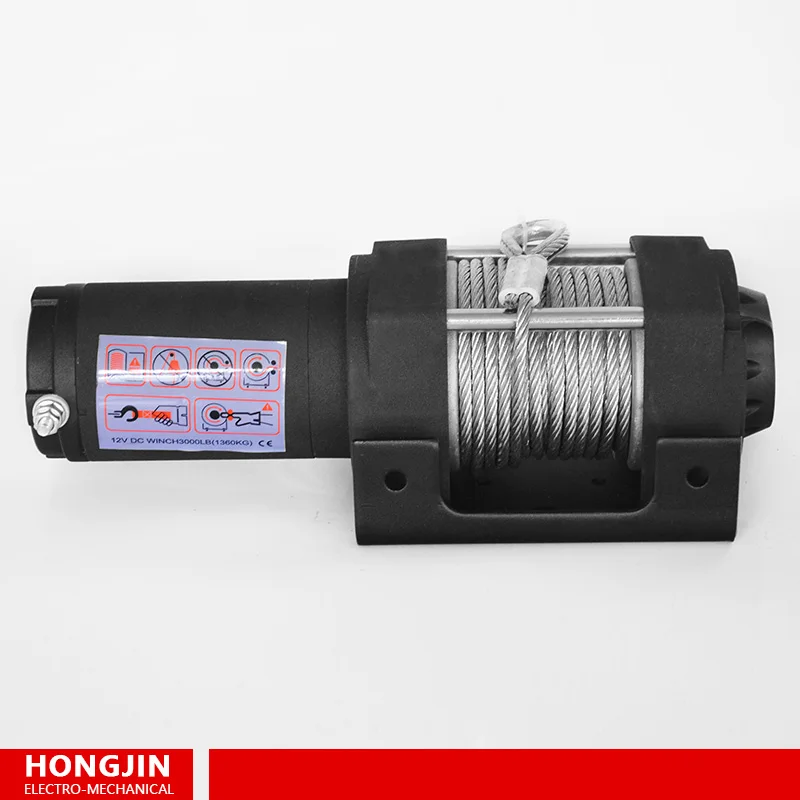 Some sparks when tapping like this are normal.
Some sparks when tapping like this are normal.Now you should know what causes to look at for further troubleshooting.
Some winches, but not all, have a circuit protector or a fuse that is meant to blow when the winch, for some reason, is pulling too much power. A circuit breaker may also trip if it gets submerged in water.
Suggested Solution: If the fuse is blown, replace it with a new one with the correct amp rating.
Suggested Solution: The circuit-breaker may need to be reset manually if it’s been tripped.
If the winch starts working again, you have fixed the problem.
If the new fuse blows again right away or the circuit breaker trips, you likely have a short somewhere.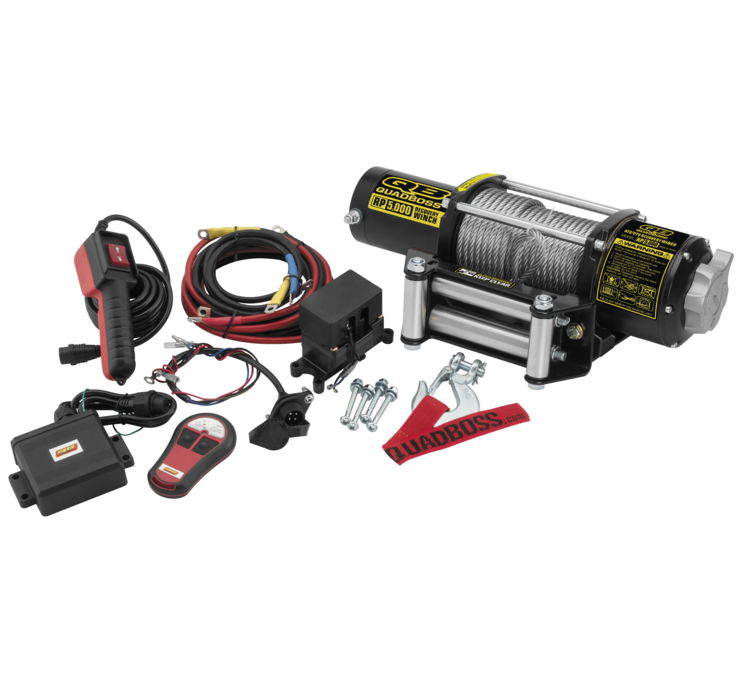
A short happens when the positive (red) cable gets in contact with any metal part, like the bike’s frame, due to a damaged cable. A faulty switch may also cause a short.
Suggested Solution: Repair or replace any damaged cables or broken switches that are causing the short.
If you can’t find any shorts in the wiring, a short may also be inside the winch itself or in the contactor—more on that further down.
A completely dead winch often indicates that it’s not getting any power or that something is not grounded the way it should be.
Suggested Solution: Make sure the winch is wired correctly.
If it has been working correctly before and you haven’t done any modifications to the wiring, an incorrect installation should not be what’s causing your issue.
But if you’re in the process of installing a new winch now, and you can’t get any sign of life, it’s a good chance you’ve got the wiring wrong somewhere.
All winches should come with a complete wiring diagram.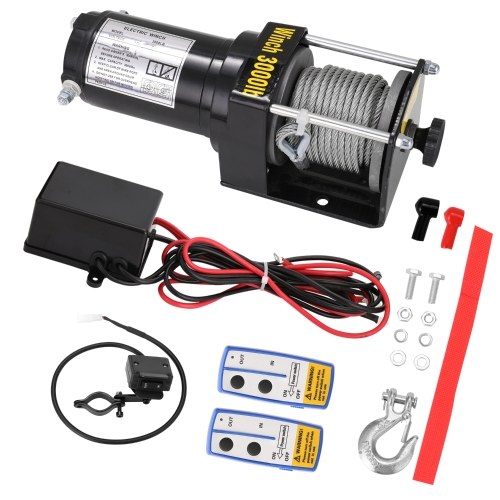 Make sure you follow it to the point!
Make sure you follow it to the point!
The basic principles on how to do the wiring should be the same on any winch. But it’s worth noting that you will see some minor but important differences between the different brands.
Commonly, the contactor’s battery terminals have different setups, where connecting the wires wrong may lead to a dead winch.
When the winch has been installed on the bike for a while, the cable terminals may corrode or come loose.
Winch cable connector that’s slightly corroded.Suggested Solution: Dissasemble and clean all terminals, one by one, to make sure you have a good connection everywhere and that they are properly fitted. Any corrosion can be removed with some sandpaper so that the terminals become shiny again.
Any switch can break due to material fatigue when it’s been pushed enough times. Cheaper winches usually come with less robust switches that will break sooner.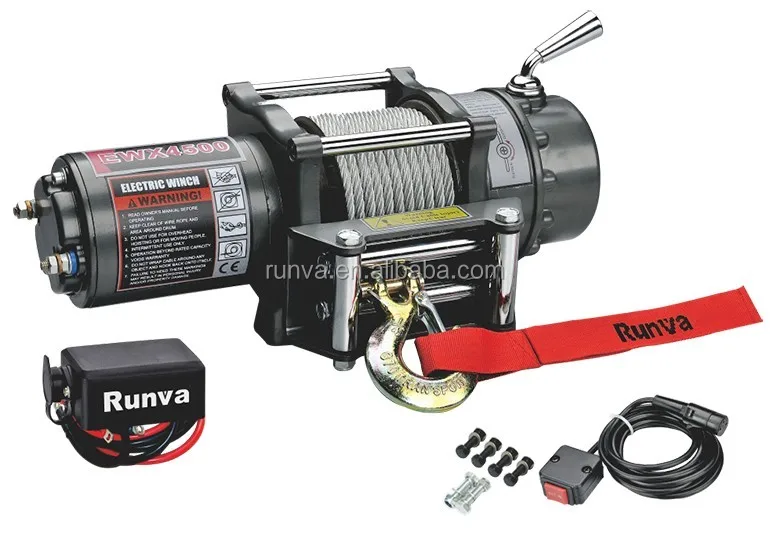
It may also stop working due to water entering and corroding its internals. Again, the cheaper ones are often less protected and are more likely to be acting up after a few encounters with salt and water.
If a switch is damaged or corroded, it may not engage the winch at all when you push it.
There are several ways you can go about troubleshooting a bad switch:
If the bike has more than one switch to activate the winch, you should begin by testing them both to see if one of them works.
Wireless remote and remote rocker switch.It is doubtful that both switches will fail at the same time. If one works, but you get no reaction from the other, it has likely gone bad.
If you have only one switch, you can determine if it’s defective by testing if the winch works when you bypass the switch:
Bypass the remote switch to make sure it’s not what’s causing the issue. You don’t want the winch to be doing any actual winching when performing this test. You only need to see if the winch engine is starting or not.
You don’t want the winch to be doing any actual winching when performing this test. You only need to see if the winch engine is starting or not.Suggested Solution: Replace the damaged switch.
If none of the above resolved your issue, and the system is simply just dead silent even when performing the jumper cable test, you are likely facing some sort of issue with the winch motor itself.
Another way to test the engine is by reading voltage drop across the motor. You need a multimeter to do this test.
You need a multimeter to do this test.
Possible Solution: Clean the motor. The electric motors inside winches are actually quite simple and robust. But they are not completely fail-proof. And sometimes dirt may enter the motor housing, creating a dead short.
Disassembling the motor and giving it a good clean may be all that it takes to bring it back to life.
Use brake-clean to clean the winch motor.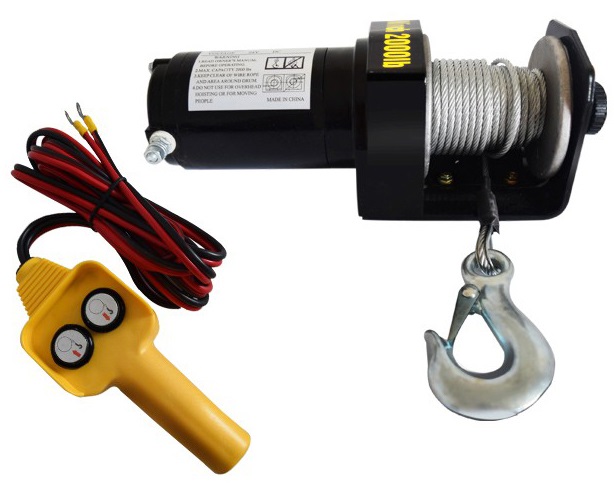
If cleaning does not help, it may have a burnt coil or a short in the motor armature. This may happen if you wire the winch incorrectly or if it’s been overheated.
Possible Solution: Replace or repair the damaged motor. If the motor is damaged, it may need replacing or a complete rebuild performed by a specialist.
The brushes will wear over time, or they may become damaged from a damaged armature commutator.
Suggested Solution: Replace worn or damaged brushes. If the motor has some age to it, the brushes may be worn and need replacing. And if the motor armature gets damaged, it may also damage the brushes.

When you engage the winch, either using the handlebar rocker switch or a wired or wireless remote, the winch motor will turn just one way.
It may spool in but not out again, or it may spool out but without being able to spool it back in.
Before you spend time and money on more expensive parts, it’s a good idea to make sure the problem is not in the wiring, as these kinds of issues are usually cheap and simple to repair.
Again, the cause of the issue maybe some sort of wiring issue.
But before you check the rest of the wiring as described above, you should start by looking at the cable that goes from the remote switch to the contactor.
The cable itself may be damaged, or the connector at the contactor may have come loose.
Also, check if the pins inside the remote control plug have become pushed out of position or bent.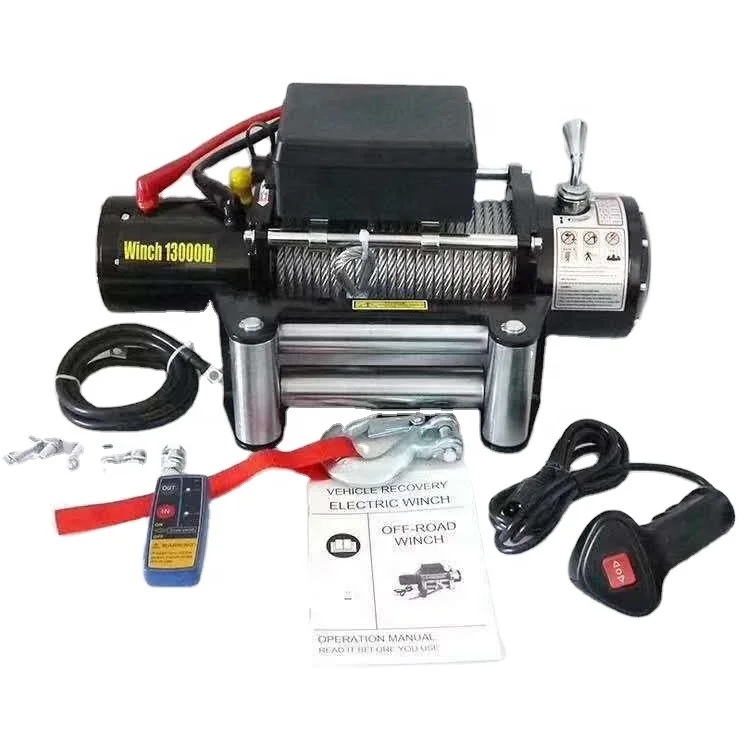
Suggested Solution: Repair or replace any damaged wiring.
If the switch is only partially defective, the winch may not go completely dead but can work in only one direction. Test the switches as described above to see if they are all working properly.
If you’ve ruled out that the problem is not in your wiring, you will likely find it in the solenoid inside the contactor.
You can compare the contactor to an ordinary relay. They have the same purpose: To prevent sending all of the current directly through the remote switch, which would require a very impractical huge switch.
The contactor is basically a huge switch that can handle high currents. It’s activated with a low current from a much smaller switch.
This contactor uses only black and red color-coding. Others use yellow and blue as well.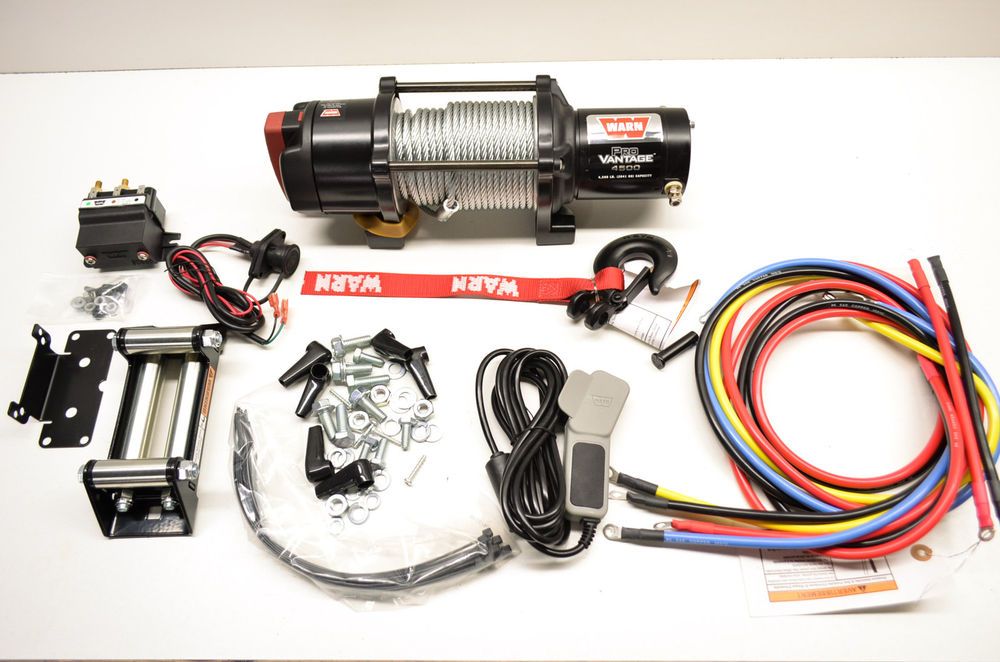
All ATV winches will have one, and its job is to switch between sending a positive and negative electric current to the winch. This is what determines which way the engine turns.
Inside the contactor, you’ll either find one two-sided or two single-sided solenoid magnetic coil switches. One is activated when pressing the in button, and the other is activated when pressing the out button.
When the solenoid works as it should, it will physically move when it’s being activated. This is what makes the audible clicking sound when you activate the winch switch.
A two-sided solenoid will have four battery cable connections, where one side is wired + to – and the other side is wired – to +. These are often marked with red, black, blue, and yellow, matching the wires that go on them. Some winches use only red and black color coding.
Solenoids do, however, tend to break or get stuck. When it’s stuck, you won’t get it to switch between positive and negative current.
Suggested Solution: You can try gently tapping the contactor with the handle of a screwdriver to free it up.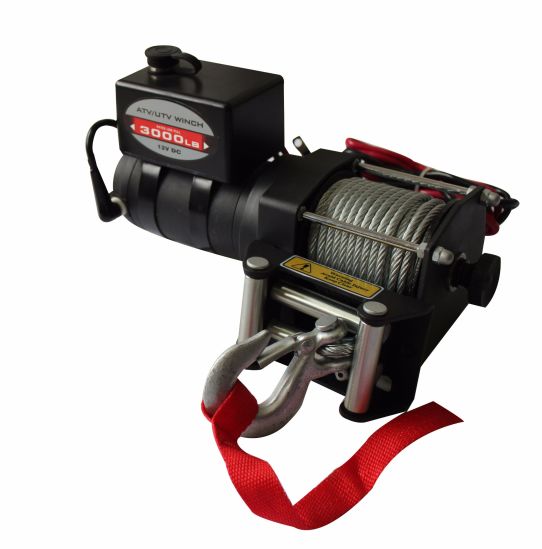 But this will just be a temporary fix. It may soon get stuck again until you replace the contactor with a new one.
But this will just be a temporary fix. It may soon get stuck again until you replace the contactor with a new one.
Because of the wet and muddy conditions that lead you to get a winch in the first place, the solenoids may rust over time. Rusted plungers will not move freely, so that you don’t get proper contact.
When you take off the contactor cover, you will quickly see if corrosion is what’s causing your issue.
Suggested Solution: Replace rusted contactor.
You can test the solenoid by hooking a test light on the cables that go to the winch.
Test first with the blue, then with the yellow. If you don’t get a light with one of them, you likely have a bad solenoid.
A good way to protect your new contactor is by slathering it with dielectric grease and make sure it’s placed up high and dry.
This one is widespread, and when it comes to troubleshooting, it has a positive side to it:
When you hear an audible click sound, you know that the contactor is getting power when the switch is being pushed.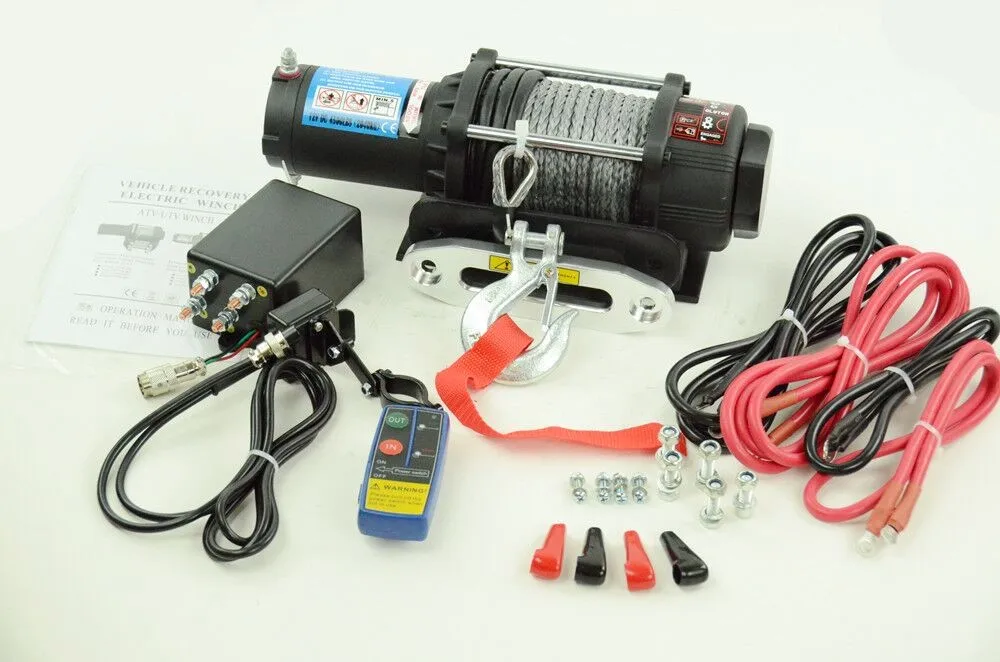 This means that everything up to the contactor, including the switch, should be fine.
This means that everything up to the contactor, including the switch, should be fine.
Suggested Solution: Start by making sure the battery is fully charged and has a voltage reading of at least 12,4V. Remove the battery terminals and clean them to ensure a proper connection.
Also, make sure that the grounding cable on the winch motor housing is properly fitted.
This leaves either the winch motor or the contactor.
When you are in a situation like this, you want to rule out one or the other. Again, the easiest way to go about doing this is by performing the jumper cable test as described above to see if the winch is working or not.
If the winch works as normal when you power it with jumper cables, the issue will very likely be in the contactor.
The solenoids may be firing up, but they are not connecting. This may be due to corrosion or damage from overheating.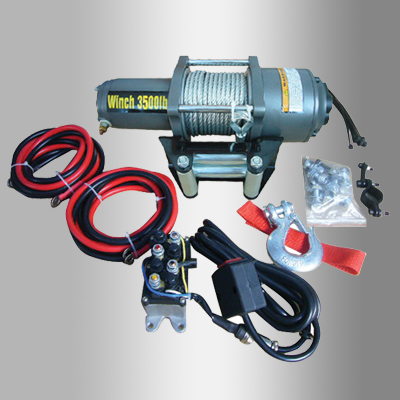
Suggested Solution: In this case, the contactor needs replacing.
If the motor does not turn as normal when being fed power directly from the battery, you know it has some issue.
The possible causes for it not working and procedures for troubleshooting and fixing are the same as when the winch is completely dead.
If the winch works fine sometimes, but other times it just makes a clicking sound, the cause of the issue will likely be the same as when you always get clicking, and the winch never works. Just follow the steps above, and you should find your problem.
If the winch works sometimes, but other times is completely dead, you are more than likely facing a loose cable, creating a bad connection somewhere. Go over the wiring, and make sure nothing has come loose.
You may find that the winch turns but does so very slowly.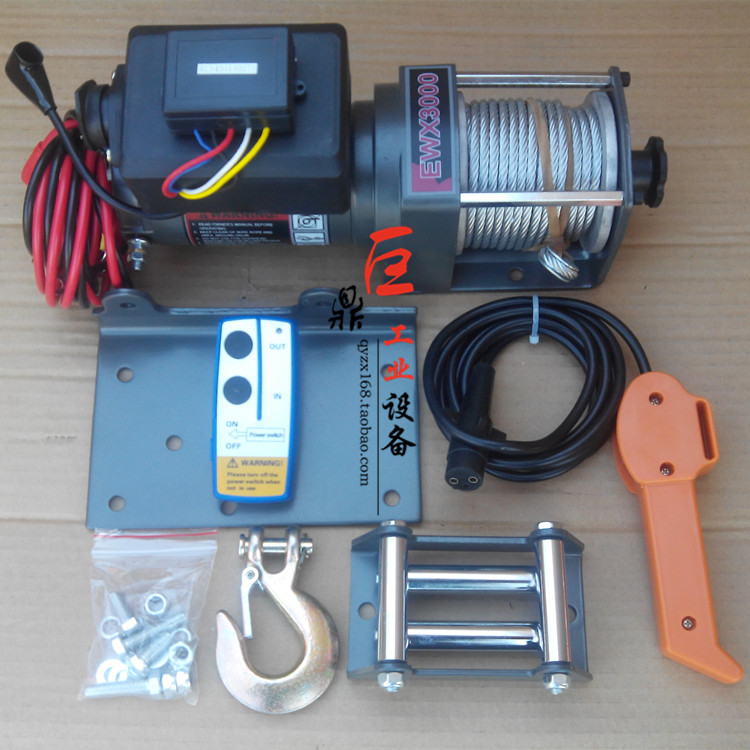 It seems to seem to be down on power or may even stall out when pulling loads that it normally should manage just fine.
It seems to seem to be down on power or may even stall out when pulling loads that it normally should manage just fine.
This may be due to a damaged motor, as described above, where you just get a clicking sound. Other possible causes are:
If the cable or rope, for some reason, is not spooled onto the drum in the correct direction, it will work against the automatic brake. This will be like trying to drive your car with the handbrake on.
Suggested Solution: Spool the cable or rope all the way out, and re-install it in the correct direction. There should be a sticker indicating correct drum rotation.
Suggested Solution: Fully charge the battery. Replace it if the battery is damaged. Clean terminals.
If the battery keeps draining, even after replacing it, the issue may be with the bike’s charging system.
Related: 10 Reasons Why Your ATV Battery Keeps Draining (Going Dead)
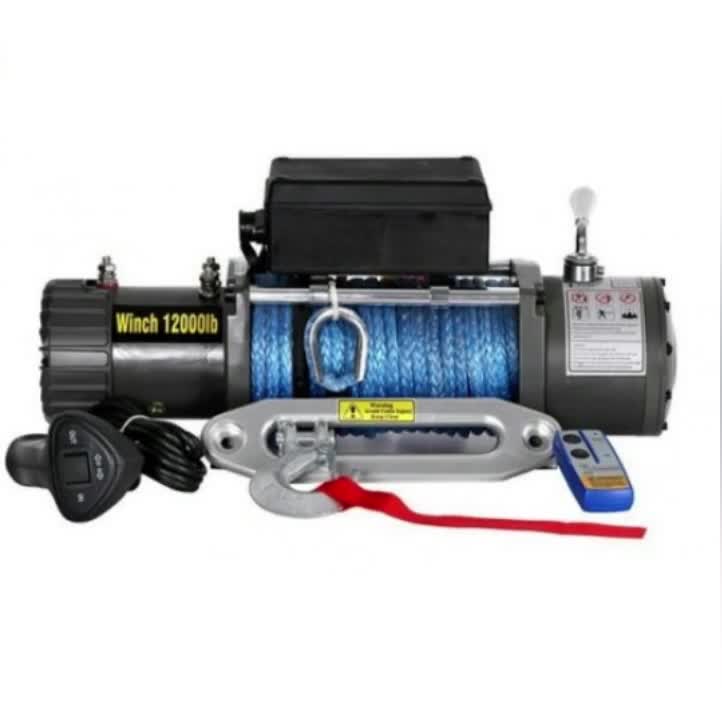
Suggested Solution: Please refer to the procedure for re-greasing the gears when the winch won’t free spool.
If you put too much grease in the planetary gears, have used the wrong grease (too thick), or if the grease has gummed up due to water contamination and age, the gears will not turn as freely as they should.
Suggested Solution: Remove old grease, apply correct amounts of new grease.
Brand new planetary gears with factory grease.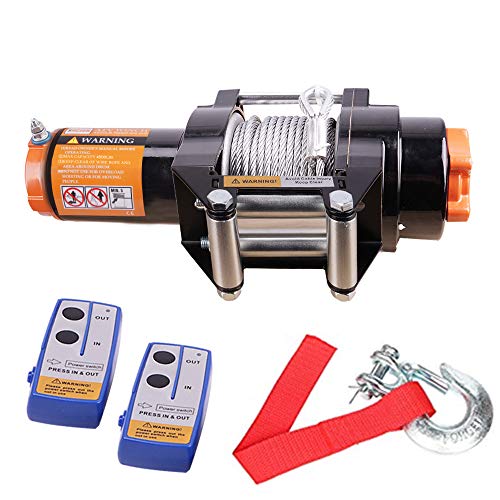
If your winch cable has become all jammed up and goes in no matter which way you run it, this little trick may get you out of a pinch.
This works most of the time. Other times it just makes the situation a lot worse.
Another tip is to put the winch in a free spool position and use another winch to pull it out.
While some heat is normal whenever the winch motor is being put under a heavy load, you may find that it gets abnormally hot after being used for a short time.
Also, note that operating the winch over a long period may also overheat it, with the risk of permanently damaging the motor.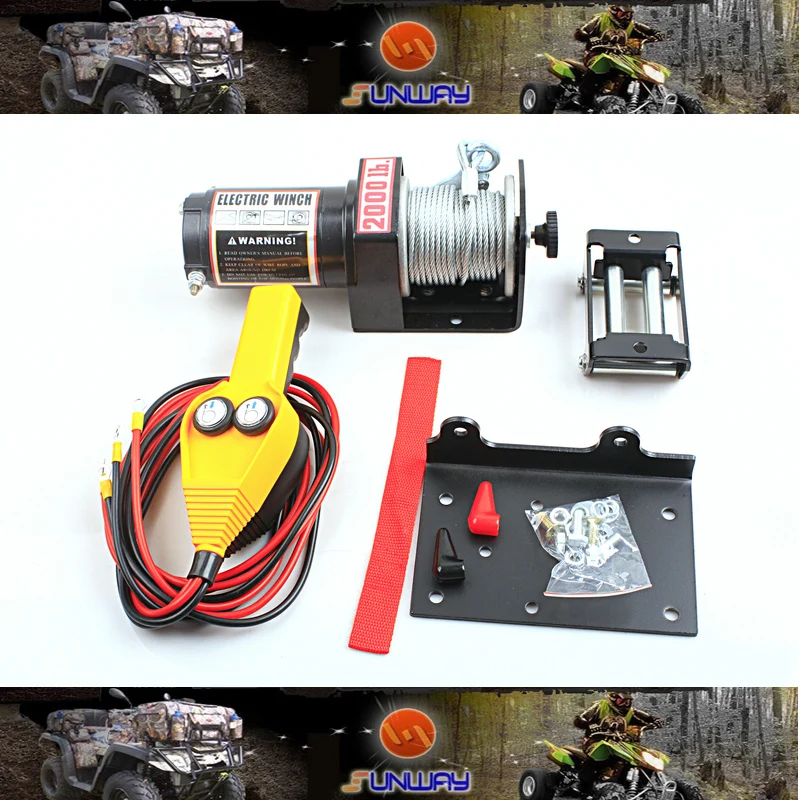 Take breaks to allow the motor to cool down.
Take breaks to allow the motor to cool down.
Suggested Solution: Remove the winch motor end cap. Use some fine sandpaper or emery cloth and give both the motor end shaft and the inside of the bushing a light rub.
Suggested Solution: Replace winch motor.
The motor may be turning, but you cannot get the winch to engage. Or you may have problems getting the winch to disengage to the free spool position.
When the engage lever does not budge, the problem can be with the knob/ lever itself or with the gears; it operates.
Suggested Solution: Clean, remove rust and apply new grease.
The lever needs to come out to be cleaned, and any rust must be removed.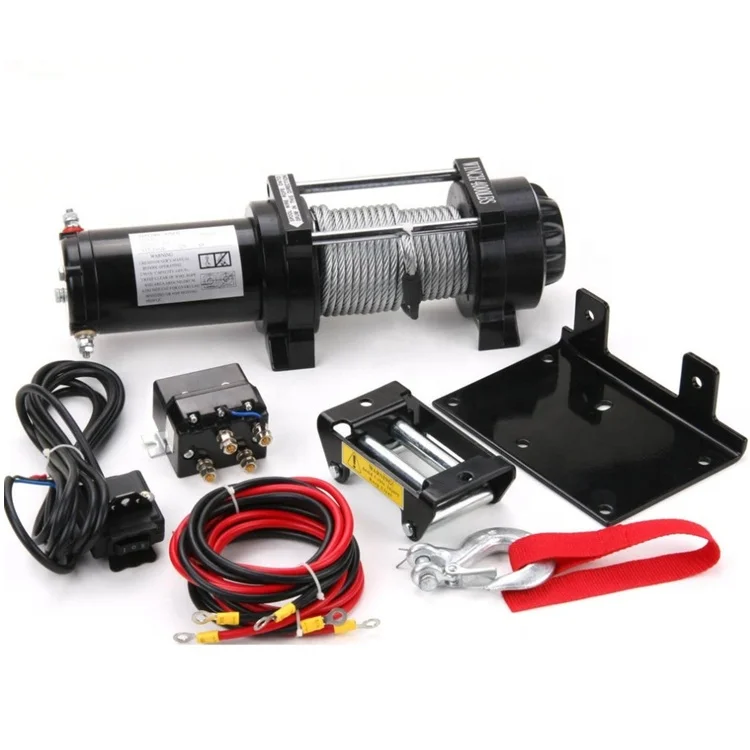 Some levers can be removed without disassembling the winch.
Some levers can be removed without disassembling the winch.
Other winch models require some disassembly for the lever to come out.
Now that your winch is already disassembled, it may be a good idea to service the gears while you are at it.
Suggested Solution: Clean and remove corrosion. Apply oil.
Inside the winch, on many models, there is a ring gear that needs to slide freely sideways for you to be able to engage and disengage the winch.
If this gear or the outside diameter of the winch housing it slides up against starts to corrode, it will become stuck either in the engaged or disengaged position.
Dirt and other debris won’t help the situation either.
Disassemble, clean, remove rust, lightly coat gear and housing surface with oil, and reassemble.
It may also be hard to get this ring gear to slide if someone mistakenly has applied grease on the outside of the gear or to the inside of the gear housing.
While the other winch gears should be lightly greased with some CV-joint type grease, this is not true for the ring gear.
The grease will create too much drag, making the gear hard to operate. A light coat of oil is all that should be used here.
If the gears have become damaged somehow, you may not be able to budge the engage lever at all. Using the winch to tow someone, or trying to yank on someone that’s stuck, is a common rookie mistake that is likely to strip the gears.
Suggested Solution: Replace damaged gears.
You need to disassemble the winch and inspect for damaged gears. All damaged parts can be replaced to get the winch back in working order.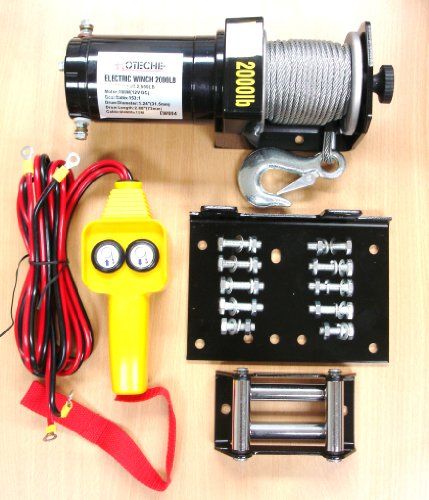
Warn, and many other ATV winch manufacturers use a design where you need to twist a knob at the end of the winch housing to switch between free-spool and locked position.
However, this design seems to be a bit more fragile than the angled knob often seen on larger winches. Some models have issues with the knob getting stuck due to bad design.
What happens is that the knob gets stuck when it is over-rotated, and the clutch bar gets hung up on a small plastic sliding ramp that’s part of the design.
You can disassemble the knob to put everything back in place, but if your winch is affected by this issue, you will soon get it stuck again if you are not careful.
Suggested Solution: Get upgraded parts from the manufacturer.
If you face issues with engaging or disengaging a winch that uses this type of knob, I suggest taking it to the dealer to get upgraded replacement pars if it’s still under warranty.
Even if you managed to get the winch to disengage properly, it very hard to free spool.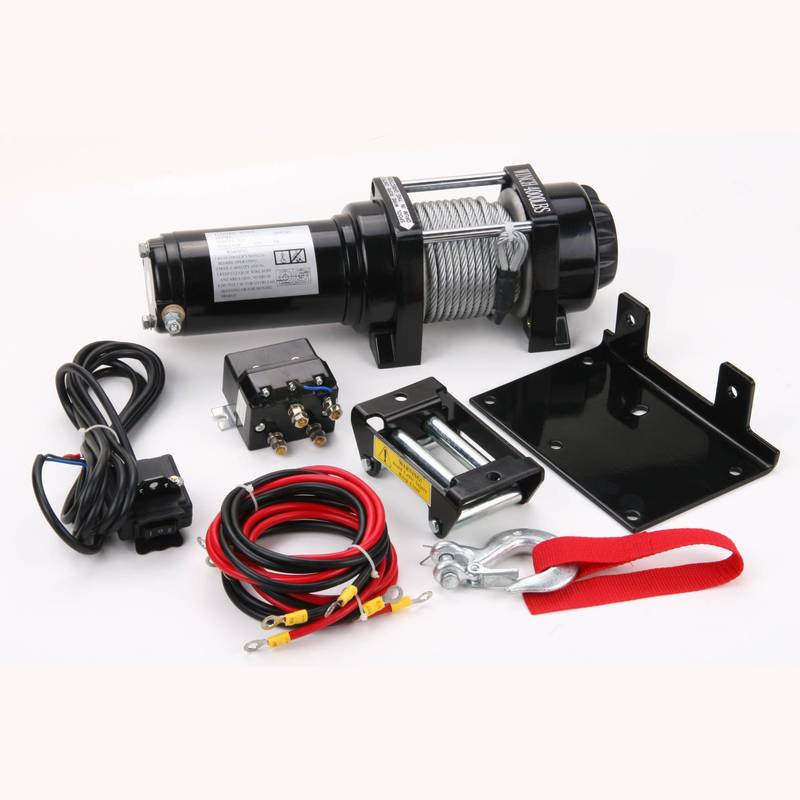 It requires a lot of force to pull out the cable/rope.
It requires a lot of force to pull out the cable/rope.
If you engage or disengage the winch under load, it may create a burr outside the ring gear. This creates mechanical friction and makes it harder to free spool the winch.
Suggested Solution: Use a file and gently remove any burr. Apply oil before reassembling.
The sliding ring gear and the inside diameter of the winch housing that it slides against should not be greased.
Not only does this makes it hard to engage the winch, but it will also create drag, making it hard to free spool the winch.
Suggested Solution: Remove grease, apply a thin layer of oil.
If you winch at an angle, all the cable will stack up on one end of the drum.
This may not only get the drum stuck, but it may also damage the drum itself by forcing the sidewalls outwards.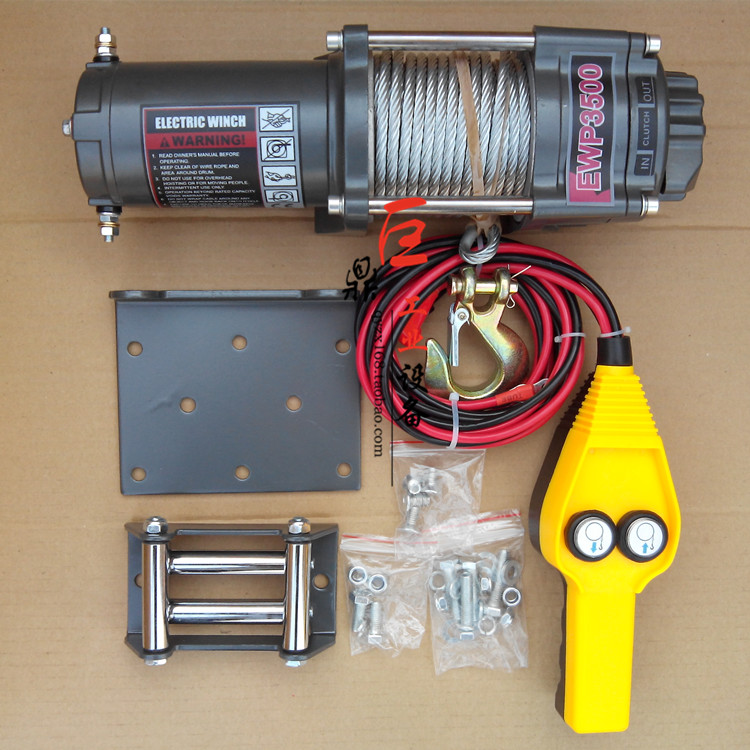
Suggested Solution: Disassemble and try to straighten the drum walls. If it cannot be repaired, the drum needs replacing.
Suggested Solution: Try troubleshooting why it won’t engage as described earlier.
Whether it is due to using the winch, the clutch not being completely engaged, or from incorrect use like towing or yanking, the gears may be stripped.
Inspect all of the winch gears.Suggested Solution: Disassemble the winch to inspect the gears, and replace them if needed.
If you regularly use a winch for recovery or maintenance, then you may be wondering how to test a winch motor.
It’s a good idea to test your winch motor for a variety of reasons, and it’ll also give you a better understanding of the tool you’ve come to know and love.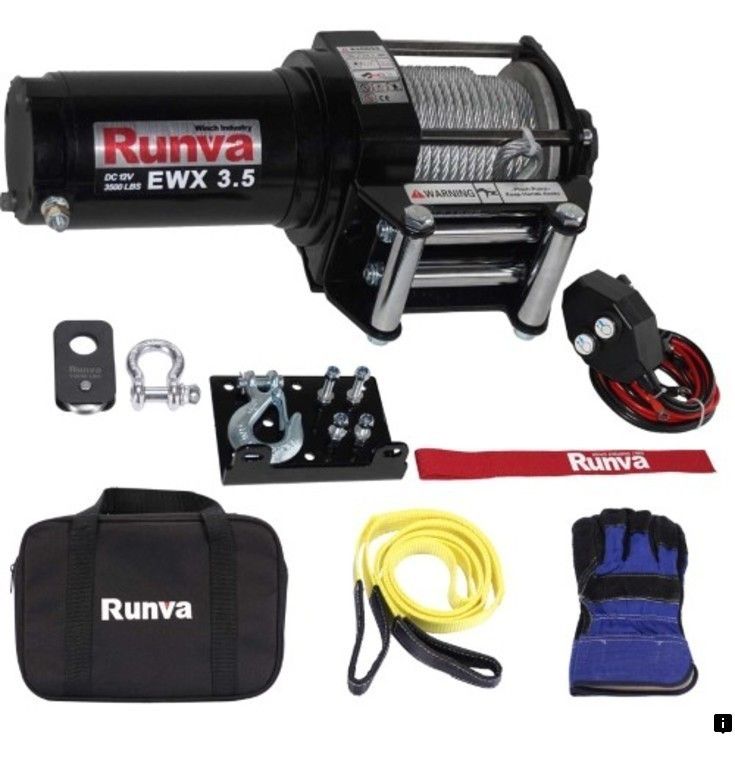
A winch motor may seem like a very complicated piece of machinery but have no fear because it’s not so complex, and we’ll simplify everything down. Let’s take a look, shall we?
Here are two methods to test your winch motor without removing it from your vehicle. Great if you just want a quick test, or you’re out and about.
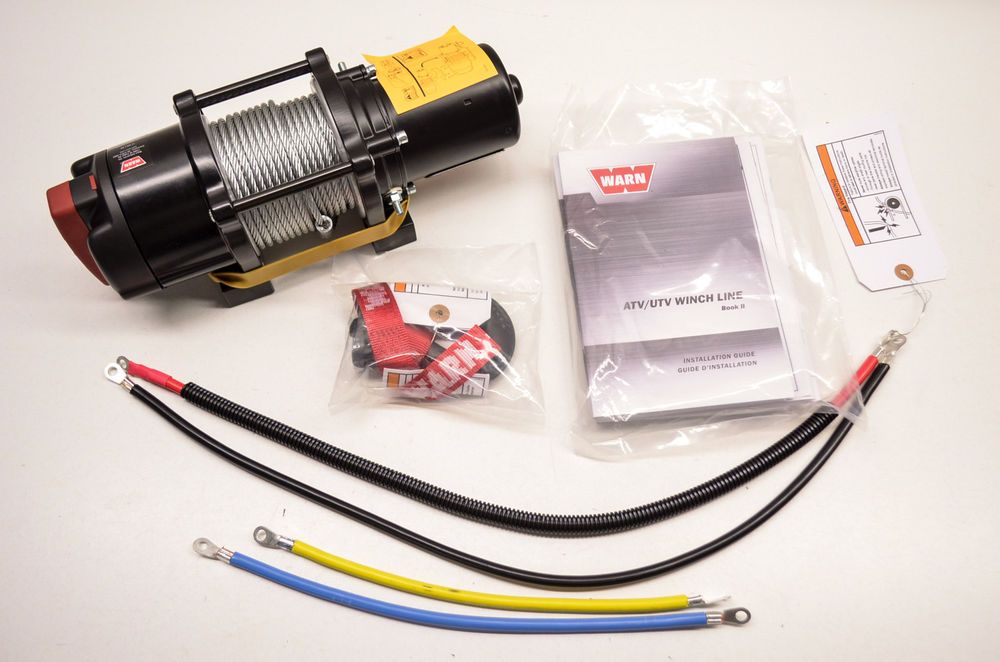 If your winch drum doesn’t move, stop this process as there is a problem with your winch. You can try to diagnose the problem from the list a little further below.
If your winch drum doesn’t move, stop this process as there is a problem with your winch. You can try to diagnose the problem from the list a little further below.If you reverse the connections, the winch drum should turn the other way.
This is the simplest method on the list, requiring minimal equipment and minimal knowledge of electric circuity.
If you want to know if your problem lies in the electrical components of your winch and not the mechanical motor, use this method.
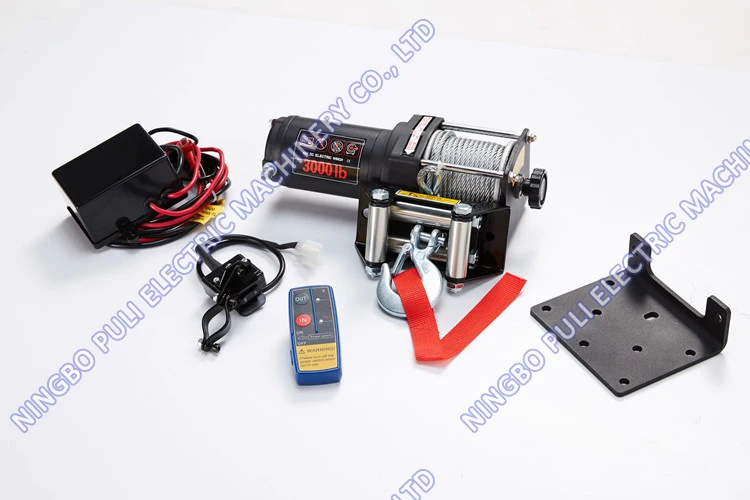 However, if the reading isn’t close to the running voltage of the winch, then there is a problem with the electrical components.
However, if the reading isn’t close to the running voltage of the winch, then there is a problem with the electrical components.If you want a thorough test of your winch, you can disconnect it from your truck or ATV and connect it to a bench. Bench testing will give you a thorough and even more accurate reading of your winch. In fact, you’ll be able to test all of the specs of your winch to see if it’s living up to the manufacturer’s specs.
Working with electricity can be an extremely dangerous task if you do not treat it with the respect that it deserves. Here are some essential safety points to bear in mind before you start testing your winch’s motor.
Here are some essential safety points to bear in mind before you start testing your winch’s motor.

Well, your winch motor is the very central piece of your winch. Without a working motor, your winch will be pretty much pointless, and you may as well scrap it for parts. No one wants to do that, firstly because of how much we love winches, but also because of how expensive they are.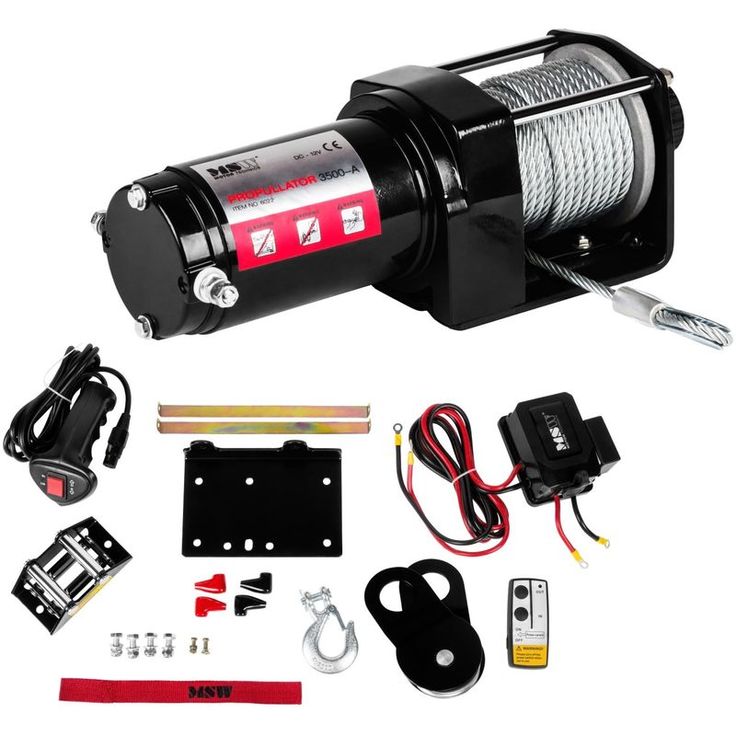 Periodically testing your motor will save you so much money and effort in the future, so it’s definitely an excellent idea to learn how.
Periodically testing your motor will save you so much money and effort in the future, so it’s definitely an excellent idea to learn how.
If you find that, after using these methods, your winch motor either isn’t working or isn’t working to its full potential, then there are a variety of things that you can do to fix the problem.
A faulty motor is normally due to 3 factors:
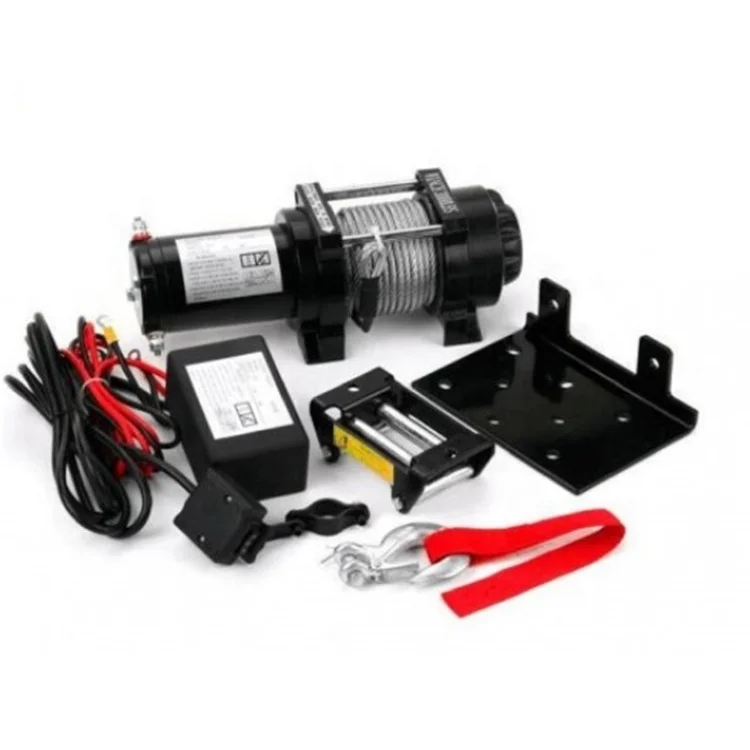 To fix this problem, open the motor housing and replace the brushes.
To fix this problem, open the motor housing and replace the brushes.The reason that your motor is not working may be down to the simple fact that it is dirty. Small particles can enter the inner workings of your winch and cause it to stop working. Here’s a quick guide on how to clean your winch:
A lack of results may mean that you have broken parts within your motor. This may require the help of a professional to diagnose and fix. To avoid having broken parts in the future, make sure you are regularly cleaning and maintaining your winch motor.
You may have found, after the jumper cable test, that your winch drum will only spin in one direction.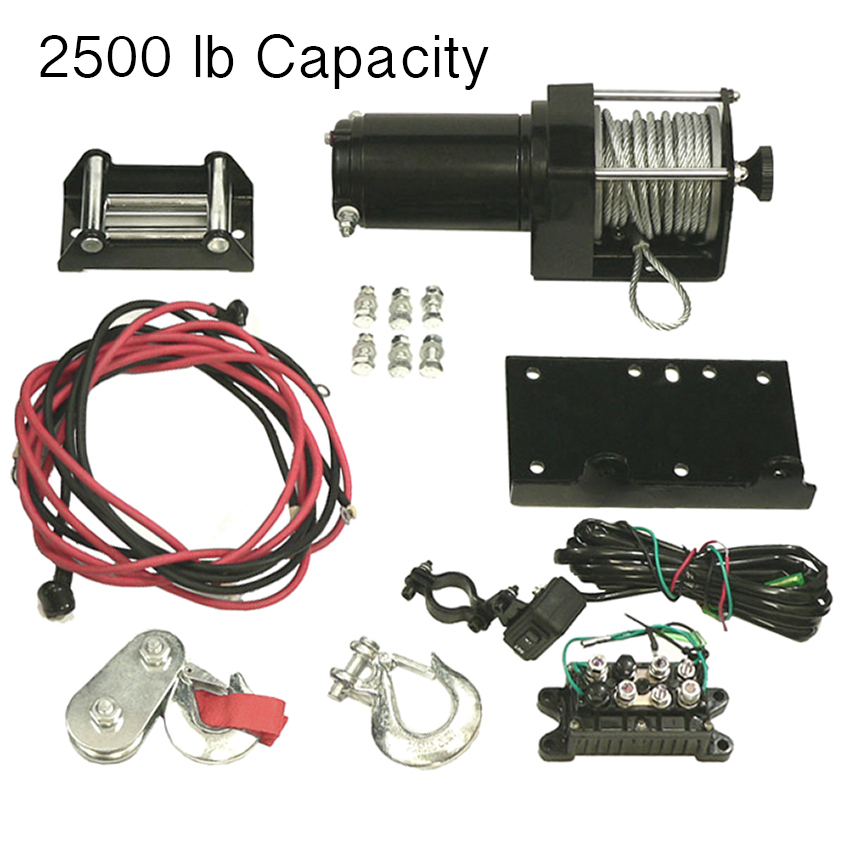 There are 4 main culprits of this problem:
There are 4 main culprits of this problem:
So, there’s a comprehensive guide on how to test a winch motor.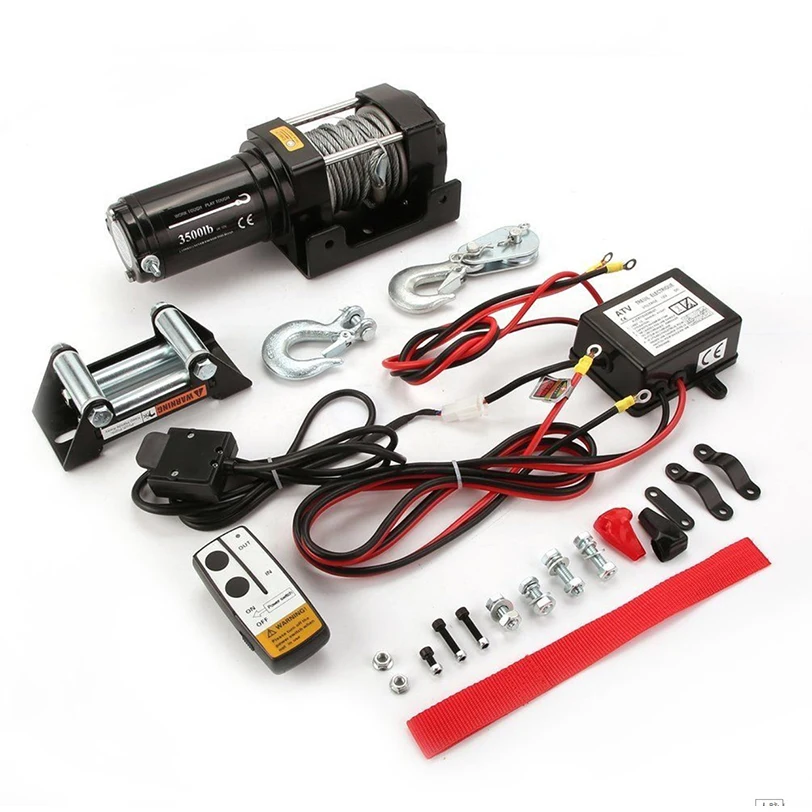 Your winch motor is the very heart and soul of your winch, so it’s really worth learning how it works and how to diagnose a problem if you find one.
Your winch motor is the very heart and soul of your winch, so it’s really worth learning how it works and how to diagnose a problem if you find one.
Regular maintenance can save you a boatload of money and time in the future, and it doesn’t take long at all! If you have any further doubts about your winch motor after testing, always ask a professional for help. We hope you found this guide useful and wish you the best of luck with your future winching!
Most ATVs have a winch in the front as standard. If there is no winch, you can buy it and install it yourself.
Below we will tell you how to use it correctly and how to choose it if you need to buy a new one.
The winch helps:

In principle, it is possible to do without a winch, but only if you are going to ride on dry and proven routes, and you definitely will not be tempted to go beyond them. In any other case - if you are not afraid of fords, mud, steep slopes, forests - a winch is a must.
Structurally, it is a drum on which a rope with a hook at the end is wound. On the sides of the drum are an electric drive and a gearbox to reduce the number of revolutions so that the drum spins slowly. The drive is connected to the battery of the ATV itself, and is powered by it, even if the engine is turned off. Usually, on winches, the cable is unwound in two ways: either manually or by the same electric drive.
The whole structure is mounted on a special platform, which is usually located on the front bumper of the ATV.
Before buying a winch, check if your ATV has a prepared platform for mounting it - some models do not have it as standard.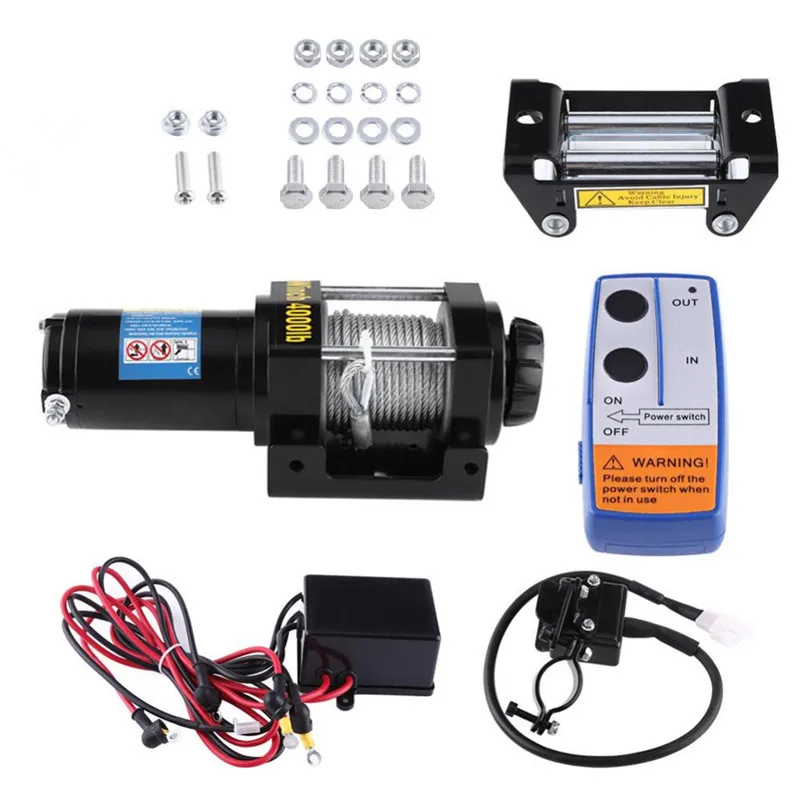 If not, you first need to buy and install a platform, and then attach the winch itself to it.
If not, you first need to buy and install a platform, and then attach the winch itself to it.
Please note:
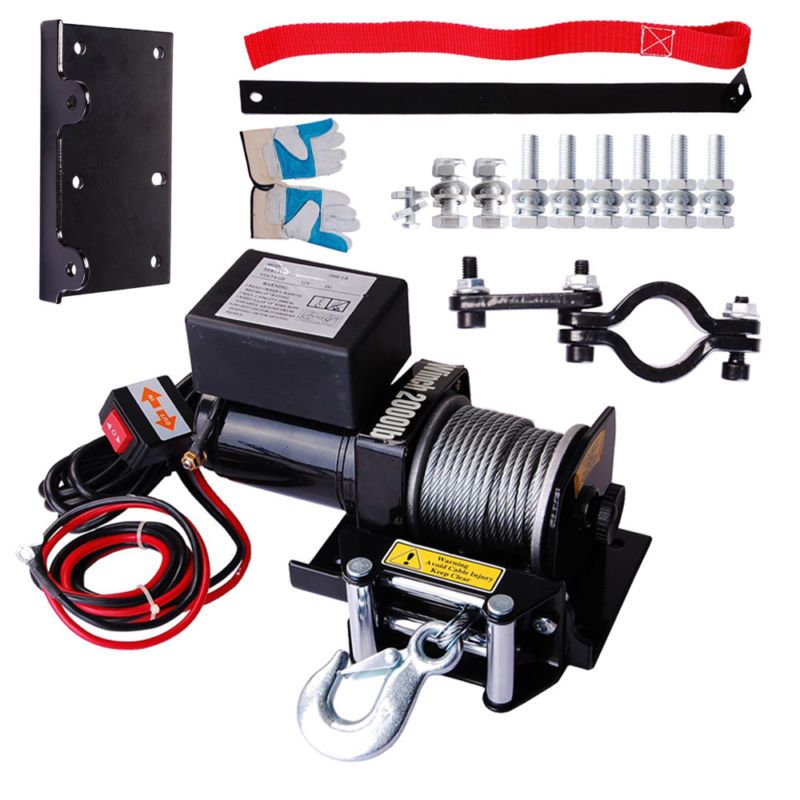
Did you check if you have a playground? Have you already chosen and bought a winch?
Now it needs to be installed:
If your ATV doesn't have a platform, you'll need to buy one (or make one from a metal plate) and attach it to the frame. For fastening, the trim is removed from the front of the ATV, and the front part itself is lifted with a jack. The platform can be fixed with bolts or by welding.
ATV winches are sold in our store. Give us a call or email us and we'll help you find the right option for your ATV, as well as explain how to properly install and connect everything.
Suspension. Shock absorbers must be free of oil, and CV boots must be free of holes through which moisture can enter. To check the condition of the wheel bearings and hub bushings, you need to raise the ATV with a jack and shake the wheels vertically and horizontally - if there is play, one of these parts is worn out. Most often these are bearings. You also need to check all the suspension arms for play - perhaps ball bearings or silent blocks need to be replaced.
ATV with working shock absorbers lowers and rises evenly - when pressing on the rear or front, one of the sides should not sag.
Transmission. Gearboxes must be free of oil leaks and cracks. The oil in them can be checked by lowering a plastic clamp into the filler neck or unscrewing the drain bolts: it’s bad if the liquid is opaque, it contains chips or other foreign particles. To check the modes of operation of the transmission, you need to jack up the front of the ATV. When all-wheel drive is on, when turning the left wheel, the right wheel should rotate in the opposite direction, and vice versa. When the differential lock is engaged, both wheels rotate in the same direction. Transfers should be included without effort and crunch.
Engine. It must be free of oil. A serviceable motor starts in 2-3 seconds and works without a metallic rattle, an arbitrary increase and decrease in idle speed.
Bad sign - black oil or with foreign particles. Normally it is transparent.
A malfunction is also indicated by black, white or blue smoke from the exhaust pipe, as well as a burning smell. At idle, the exhaust gases of a serviceable ATV are almost transparent.
It is advisable to measure the compression in the cylinders - this will require a compression meter with adapters for different threads of the candles and knowledge of the normal compression value in the cylinders of a particular ATV model, taking into account the decompression meter.
Coolant . You need to check with a cold engine. The antifreeze level must be between the minimum mark "LOW" and the maximum "FULL". The liquid should not be cloudy. If there is sediment or dirty “flakes” under the radiator cap, the motor was poorly maintained and may have overheated.
Air filter . If there are oil stains on it, most likely the ATV turned over.
Electrical . It is necessary to check the operation of the parking lights, high and low beams, turn signals, alarms, horns, heating, winches. Error indicators - for example, an electric booster - should go out when the engine is started.
Electric power steering . With the ATV running and jacked up, turn the steering wheel left, right, then center. With a working electric power steering, the steering wheel does not turn on its own.
Frame. Cracks, extensive corrosion, welding spots, stripped or fresh paint in the places where the suspension arms are attached, on the arms themselves and on the bottom of the frame - a reason to refuse to buy. Cracks or welding in the cargo platform area are not critical.